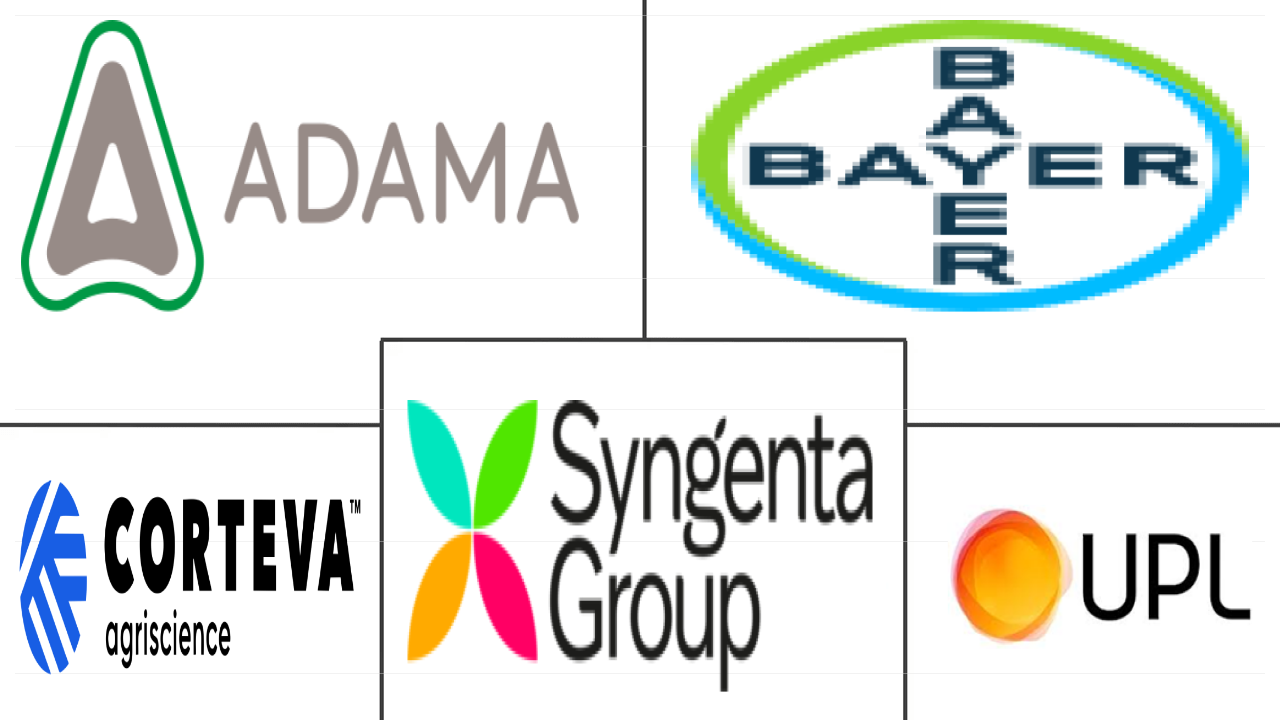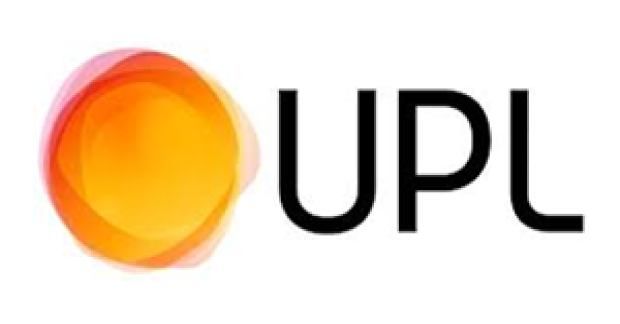Market Size of asia pacific nematicide Industry
| Icons | Lable | Value |
|---|---|---|
|
|
Study Period | 2017 - 2029 |
|
|
Market Size (2024) | USD 580.5 Million |
|
|
Market Size (2029) | USD 699.8 Million |
|
|
Largest Share by Application Mode | Soil Treatment |
|
|
CAGR (2024 - 2029) | 3.81 % |
|
|
Largest Share by Country | China |
|
|
Market Concentration | High |
Major Players |
||

|
||
|
*Disclaimer: Major Players sorted in no particular order |
Asia Pacific Nematicide Market Analysis
The Asia Pacific Nematicide Market size is estimated at 580.5 million USD in 2024, and is expected to reach 699.8 million USD by 2029, growing at a CAGR of 3.81% during the forecast period (2024-2029).
580.5 Million
Market Size in 2024 (USD)
699.8 Million
Market Size in 2029 (USD)
1.66 %
CAGR (2017-2023)
3.81 %
CAGR (2024-2029)
Largest Segment by Application Mode
69.37 %
value share, Soil Treatment, 2023
Soil treatment has emerged as the most widely utilized method for better control of devastating nematodes like root-knot nematode species in major crops like grains and cereals.
Largest Segment by Crop Type
57.91 %
value share, Grains & Cereals, 2023
Higher cultivation areas and increased crop losses by nematode infestations ascend the nematicide's adoption in grains and cereals for better nematode management.
Largest Segment By Country
35.59 %
value share, China, 2023
Severe crop losses in major crops like cereals, fruits, and vegetables by nematodes like root-knot nematodes and cyst nematodes are increasing nematicide usage in the country.
Leading Market Player 1
38.03 %
market share, UPL Limited, 2022

UPL Limited introduces new innovative products like Oncol 5GR nematicide to its portfolio by partnering with companies like OAT Agrico, resulting in company growth.
Leading Market Player 2
24.82 %
market share, Syngenta Group, 2022

Syngenta invests more in expanding its product portfolio by adding new products like VICTRATO and TYMIRIUM-based nematicides, resulting in the growth of company strength in the market.
Soil application of nematicides dominated the market owing to fewer risks of exposing non-target organisms
- Nematodes that feed on plant parts are called plant parasitic nematodes (PPN). Nematicides are used to control these nematodes through various application methods like foliar application, chemigation, and soil treatment.
- Compared to other application methods, such as foliar application, soil application of nematicides generally poses fewer risks of exposing non-target organisms, including beneficial insects and pollinators. This is because the nematicide remains primarily in the soil, where the target nematodes reside. Owing to this, soil application dominated the market with a share of 69.3% in 2022.
- Foliar applications accounted for 12.8% of the Asia-Pacific nematicide market in 2022. The main purpose of the foliar application is to control the infestation of inflorescence and the infestation of leaves by nematodes such as the Anguina tritici (seed gall nematode), also known as seed gall disease-causing nematodes, which are present in cereals such as wheat. Foliar application is effective against nematodes due to the use of active ingredients like methyl bromide, Oxamyl, and parathion.
- Chemigation accounted for 8.0% of the Asia-Pacific nematicide market in 2022. China dominated the chemigation segment with a market share of 36.2%, valued at USD 16.4 million in 2022. The cereal cyst nematode, Heterodera avenae, is one of the major nematode pests in the Qinghai-Tibetan Plateau and Yellow River regions of China; it is reported to cause 10-90% yield losses in major crops like wheat.
- Crop losses due to nematode infestation are increasing every year and are acting as a major concern for farmers, forcing them to use nematicides in order to protect the crops.
The need to protect the crops due to rising food demand is driving the growth of the market
- Asia-Pacific, with its large agricultural industry and increasing demand for food, has witnessed a rise in the use of nematicides to protect crops from nematode infestations. In 2022, the region accounted for 19.8% of the global crop protection market by value.
- The region has a substantial agricultural industry, with countries like China, India, Japan, and Australia being major contributors. Farmers are adopting measures to protect their crops from nematodes to meet the growing demand and ensure the quality of crops, thus driving the market's growth.
- The market is expected to grow by USD 138.9 million during 2023-2029. Farmers are becoming more aware of the detrimental effects of nematodes on crop yields. Nematode infestations can lead to reduced productivity, stunted growth, and even crop failure. This awareness has prompted farmers to invest in nematicides to protect their crops.
- The expansion of commercial farming, particularly in countries like Indonesia, Thailand, China, and India, has driven the demand for nematicides. Large-scale farming operations are more susceptible to nematode infestations due to the concentration of crops in a confined area. Therefore, commercial farmers often rely on nematicides to protect their crops and ensure higher yields.
- The Asia-Pacific nematicide market is projected to register a CAGR of 3.8% by value during the forecast period (2023-2029) due to the increasing demand for agricultural products, rising awareness about nematode-related crop losses, and expansion of commercial farming. These trends are expected to continue as the region's agricultural industry further develops and addresses the challenges posed by nematode infestations.
Asia Pacific Nematicide Industry Segmentation
Chemigation, Foliar, Fumigation, Seed Treatment, Soil Treatment are covered as segments by Application Mode. Commercial Crops, Fruits & Vegetables, Grains & Cereals, Pulses & Oilseeds, Turf & Ornamental are covered as segments by Crop Type. Australia, China, India, Indonesia, Japan, Myanmar, Pakistan, Philippines, Thailand, Vietnam are covered as segments by Country.
- Nematodes that feed on plant parts are called plant parasitic nematodes (PPN). Nematicides are used to control these nematodes through various application methods like foliar application, chemigation, and soil treatment.
- Compared to other application methods, such as foliar application, soil application of nematicides generally poses fewer risks of exposing non-target organisms, including beneficial insects and pollinators. This is because the nematicide remains primarily in the soil, where the target nematodes reside. Owing to this, soil application dominated the market with a share of 69.3% in 2022.
- Foliar applications accounted for 12.8% of the Asia-Pacific nematicide market in 2022. The main purpose of the foliar application is to control the infestation of inflorescence and the infestation of leaves by nematodes such as the Anguina tritici (seed gall nematode), also known as seed gall disease-causing nematodes, which are present in cereals such as wheat. Foliar application is effective against nematodes due to the use of active ingredients like methyl bromide, Oxamyl, and parathion.
- Chemigation accounted for 8.0% of the Asia-Pacific nematicide market in 2022. China dominated the chemigation segment with a market share of 36.2%, valued at USD 16.4 million in 2022. The cereal cyst nematode, Heterodera avenae, is one of the major nematode pests in the Qinghai-Tibetan Plateau and Yellow River regions of China; it is reported to cause 10-90% yield losses in major crops like wheat.
- Crop losses due to nematode infestation are increasing every year and are acting as a major concern for farmers, forcing them to use nematicides in order to protect the crops.
| Application Mode | |
| Chemigation | |
| Foliar | |
| Fumigation | |
| Seed Treatment | |
| Soil Treatment |
| Crop Type | |
| Commercial Crops | |
| Fruits & Vegetables | |
| Grains & Cereals | |
| Pulses & Oilseeds | |
| Turf & Ornamental |
| Country | |
| Australia | |
| China | |
| India | |
| Indonesia | |
| Japan | |
| Myanmar | |
| Pakistan | |
| Philippines | |
| Thailand | |
| Vietnam | |
| Rest of Asia-Pacific |
Asia Pacific Nematicide Market Size Summary
The Asia Pacific nematicide market is experiencing steady growth, driven by the increasing need to protect crops from plant parasitic nematodes (PPNs) that pose significant threats to agricultural productivity. The market is characterized by various application methods, with soil treatment being the most dominant due to its reduced risk to non-target organisms. The region's substantial agricultural industry, particularly in countries like China, India, Japan, and Australia, is a major contributor to this market expansion. The rising awareness among farmers about the detrimental effects of nematodes on crop yields, coupled with the expansion of commercial farming, is further propelling the demand for nematicides. This trend is expected to continue as the region addresses the challenges posed by nematode infestations, ensuring the quality and quantity of agricultural produce.
The market is fairly consolidated, with leading companies such as ADAMA Agricultural Solutions Ltd, Bayer AG, Corteva Agriscience, Syngenta Group, and UPL Limited dominating the landscape. These companies are actively enhancing their product offerings and technological capabilities through strategic partnerships and acquisitions. The use of specific nematicides like Fluensulfone, Abamectin, and Oxamyl is prevalent in the region, addressing various nematode species that affect crop yields. As crop losses due to nematode infestations continue to rise, the demand for effective nematicide solutions is expected to grow, influencing market dynamics and pricing strategies. The Asia Pacific nematicide market is poised for continued growth, supported by the region's agricultural development and the increasing need for crop protection solutions.
Asia Pacific Nematicide Market Size - Table of Contents
-
1. MARKET SEGMENTATION (includes market size in Value in USD and Volume, Forecasts up to 2029 and analysis of growth prospects)
-
1.1 Application Mode
-
1.1.1 Chemigation
-
1.1.2 Foliar
-
1.1.3 Fumigation
-
1.1.4 Seed Treatment
-
1.1.5 Soil Treatment
-
-
1.2 Crop Type
-
1.2.1 Commercial Crops
-
1.2.2 Fruits & Vegetables
-
1.2.3 Grains & Cereals
-
1.2.4 Pulses & Oilseeds
-
1.2.5 Turf & Ornamental
-
-
1.3 Country
-
1.3.1 Australia
-
1.3.2 China
-
1.3.3 India
-
1.3.4 Indonesia
-
1.3.5 Japan
-
1.3.6 Myanmar
-
1.3.7 Pakistan
-
1.3.8 Philippines
-
1.3.9 Thailand
-
1.3.10 Vietnam
-
1.3.11 Rest of Asia-Pacific
-
-
Asia Pacific Nematicide Market Size FAQs
How big is the Asia Pacific Nematicide Market?
The Asia Pacific Nematicide Market size is expected to reach USD 580.49 million in 2024 and grow at a CAGR of 3.81% to reach USD 699.80 million by 2029.
What is the current Asia Pacific Nematicide Market size?
In 2024, the Asia Pacific Nematicide Market size is expected to reach USD 580.49 million.

